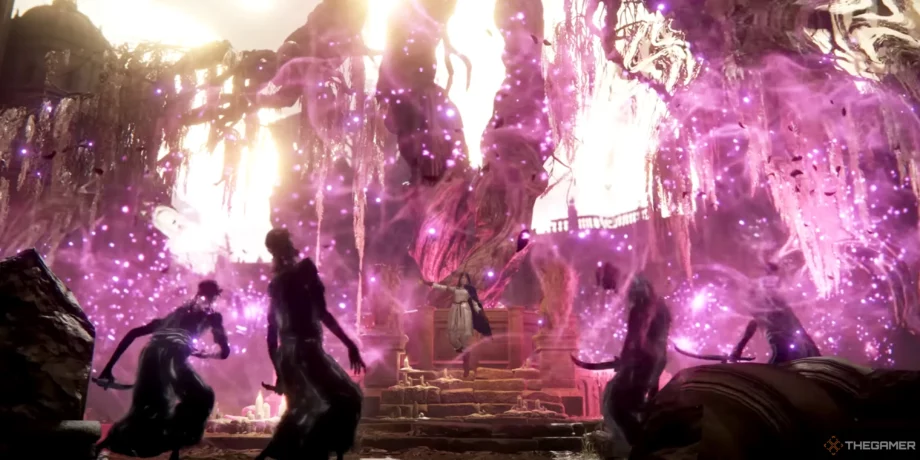After Shadow of the Erdtree, I’m glad. Dark Souls 2 and 3 are great games, but FromSoft is at its best when it’s not boxed into one series.
Bloodborne, Sekiro: Shadows Die Twice, and Elden Ring all prove as much, as each game completely revamped the soulslike genre for the better by having the freedom to experiment. I hope we never see Elden Ring ever again.
As much as I adore Dark Souls 2 and 3—the second game was my introduction to the series—they were clearly made to capitalize on the success of the genre-defining original. Not to expand on the narrative or even experiment with the mechanics in any groundbreaking way.
We are presented with a simple choice: link the flame and continue the age of gods or let it fade and usher in the age of man. Dark Souls 2 dove into the far-flung future of this world and interrogated the aftermath of such a choice, and the answer is that what we do has no meaning.
The age of gods finds its way back even if the flame fades as old lords are reincarnated, their souls refusing to let go of their power long after they die. The cycle continues and continues until eventually, the fabric of this world burns at the edges under the weight of its disparate timelines and linearity has no meaning.
Out from the grave we crawl for a third and final adventure. But Dark Souls 3’s ending is almost exactly the same as the first – link the flame or don’t.
There are other variations tied to new factions, but it boils down to the same binary decision we made years ago. FromSoftware loves a cyclical story about the inevitability of defeat, but delving into that in the aftermath means treading the same ground.
Where FromSoftware shines isn’t in sequels, it’s in completely separate stories. Not to mention the lightning-fast reflexes required for many of FromSoftware’s more contemporary bosses compared to the slow and methodical duels of old (even Ornstein and Smough feel sluggish in retrospect), something you can trace back directly to Bloodborne.
Perhaps the best feature Bloodborne ever introduced was the multiplayer password, allowing you to partake in co-op and PvP with others regardless of level. I remember the days of trying to stay within the same Soul Level as my friend in Dark Souls 2 and getting increasingly frustrated when we were just out of bounds and couldn’t play anymore.
NPCs would wither away the more you succumbed to death’s cold embrace, and traversal was completely overhauled with the grappling hook, dedicated jump button, and stealth mechanics. Again, we can feel this influence in Elden Ring—it might not be as slick as Sekiro, but as a spiritual successor to Dark Souls and thus Demon’s Souls, it has the most satisfying movement of all five games.
I mean, a dedicated jump button? How’d it take us this long to get here?
Dark Souls 4 veering into the open world genre might have worked, but it wouldn’t have been Dark Souls. Elden Ring took all the lessons learned in Sekiro and Dark Souls 3, which took all the lessons learned in Bloodborne and Dark Souls 2, which took all the lessons learned in Dark Souls, which took all the lessons learned in Demon’s Souls, to craft FromSoftware’s best game yet.
The shackles of being a sequel would never have allowed FromSoftware such creative freedom to take the bold leaps that it did, or to bring in exciting new perspectives like George R. R. Martin’s for an entirely new foundation to an entirely new world. It isn’t tied down by the expectations of its predecessors, it can start right at the beginning and completely surprise us all over again.
I can’t wait to unpack whatever world it has cooking, whatever strange and unsettling lore it has planned, and I can’t wait to see what new mechanics the team brings to the table to keep this genre fresh again after over a decade. That’s what moving on means, and it’s beyond exciting.
It takes players to a whole new region, the Land of Shadow, where a new story awaits the Tarnished.
